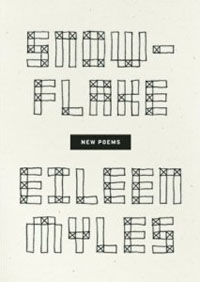The Sad Passions
 The Sad Passions
The Sad Passions
by Veronica Gonzalez Peña
Semiotext(e) / Native Agents, May 2013
344 pages / $17.95 Buy from Amazon or MIT Press
The cover of Veronica Gonzalez Peña’s novel, The Sad Passions keeps changing on me. It’s a Francesca Woodman photo—a woman or an apparition. She is suspended in air or hanging on for dear life. She is a martyr or a demon. She is in pain or in the realm of the sublime. She is being crucified or being exorcised or being made a martyr. I keep approaching the possibilities of this puzzling image and watch the figure grow porous the longer I look. She is an unstable subject and as I make my way through the novel, it’s the chair that grows more present, more formed than the person. Something in it’s gaping emptiness, the carelessly draped cloth suggesting a body, now gone. I like the way the image moves with this novel, the way the absence becomes the presence. Veronica Gonzalez Peña does not write absence as a form of lack, her absence froths and grows agitated, it fills up the page with pulsing need.

The Sad Passions follows four sisters, their lives punctuated by their mother’s mental illness, by an inheritance of cumulative ancestral pain. The sisters, while distinctly different from one another, all grapple with the fear that their mother’s madness might become their own, that their identities might slip quietly, at any trigger. One gets a sense that at the turning of the page one sister might become the other or that they might all become their mother or they might all melt into a composite figure.
It’s precisely this plurality, this repetition/duplication of identity that is at the center. In a chapter told from the perspective of the 2nd eldest sister Julia, Gonzalez Peña writes,
Each chapter is told from the perspective of a different character, often retelling the same traumatic events but with startling different sentiment. There is something in the retelling process, the approaching of truth by making different angled entries but never quite locating truth, dancing towards it—if only to say that understanding trauma, by nature is a process of de-centering, that understanding must be choral.
August 12th, 2013 / 11:00 am
Snowflake and Different Streets
 Snowflake / different streets
Snowflake / different streets
by Eileen Myles
Wave Books, Forthcoming April 2012
232 pages / $20 Pre-order from Wave Books
Eileen Myles’ poetry actively, consciously pursues the tangential thought. In her new dual collection of poems, Snowflake and Different Streets, the text glides into the tangent like she has no sense of return, like she’s just floating.
There is confidence behind the lack of linearity and I follow it happily because the text seems to already know that the tangential thought might just be the more exciting thought or as Eileen Myles might say, “the peach of it.”
February 20th, 2012 / 1:00 pm
Mouth: Eats Color
 Mouth: Eats Color
Mouth: Eats Color
Sagawa Chika Translations, Anti-Translations, & Originals
by Sawako Nakayasu with Chika Sagawa
Factorial Press, 2011
90 pages / $14 Buy from Amazon
Sawako Nakayasu’s Mouth: Eats Color is enthusiastic. It’s enthusiastic about the plural nature of meaning, about disavowing loyalty to any single language, about the act of translation as a kind of breakage. Her own poetry which often has the quality of being exuberant but measured, folds into this new book of translations as if she is having a conversation with not only Chika Sagawa but the work itself as a separately conscious entity. Or perhaps more accurately the book is in the act of collapsing several conversations, continually re-engaging the same subject on various planes.
The collection tests the flexibility of language and Sawako Nakayasu isn’t particularly gentle about it. But being gentle is for writing tributes and Mouth: Eats Color is more of an elongation, a circular extension of the text. And while she’s very polite, there’s muscle behind the way she translates, assembles, dissembles, resembles. “Promenade,” a poem repeatedly translated in Mouth: Eats Color changes its first line from “Seasons change their gloves” to “Season bag” to “Seasonal gloves” to “Seasons change their gloves,” every variation slipping easily into the next until they stop reading like re-translations of the same poem so much as chorus. The flow between her poems and Chika Sagawa’s poems offers up questions of where translation ends and collaboration begins, or if the act of translation is even possible—posits that even if content were able to sync perfectly between two completely different languages it might not survive the desire to insert authorial perspective. The collection asks that the reader consider the point when a translation deviates from the original just enough to become an entirely new work and offers up no answers except to say that the authenticity of a poem never mattered in the first place.
January 6th, 2012 / 1:00 am
